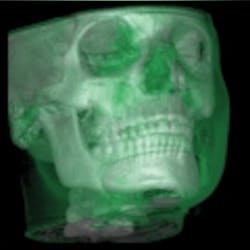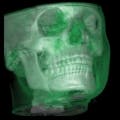Scheduling for productivity, profitability, and stress control
A dental practice, or any successful business, is built on systems that allow the organization to fulfill its mission. Executing these systems with consistency and integrity will lead to confidence from your patients.
There are approximately 25 systems in a dental practice. Each of these systems must be well structured and managed. Otherwise, there will be glitches in the overall effectiveness of the practice. Your systems must be clean. Then you must have excellently selected and educated professionals committed to those systems.
Scheduling
Scheduling is the systems that may be the heartbeat of the practice. The smoothness of your days, your ability to provide excellent care for your patients, and your ability to produce the necessary amount of dentistry each day depend on your scheduling strategies.
Placing names in the computer or on the appointment book and filling lines on the schedule does not work if your goals are productivity, profitability, and stress control. Without a careful guideline, scheduling can become a nightmare and one of the most stressful areas of the practice. Controlling stress should be a goal that receives the attention and commitment of everyone on the team.
Scheduling is one of the most difficult and intricate responsibilities in the practice. Successful scheduling is the responsibility of everyone on the team. Each person should have specific responsibilities and must be depended on to carry out those responsibilities.
However, there will probably be one person executing scheduling. It takes specific expertise and commitment to engineer days properly, so this person must have the ability, education, time, and desire to make each day successful. Remember, “Today’s lost production is lost forever."
There are eight steps involved in strategic scheduling. Four of those steps will be detailed in this issue of DAD. The final four steps will appear in the June issue of DAD.
The first four steps to strategic scheduling
1. Schedule toward a specific daily production goal.
A. As an astute businessperson, you must know the required dollars that go out every month as well as the number of dollars coming in. This will help you determine your production goal. A month that is made up of evenly productive days will be less stressful than a month that is full of high days and low days. This "roller coaster" type of scheduling leads to stress, not to mention financial security concerns.
You need to consider these three factors as you determine your monthly goal. Total these areas to determine what you must produce every month to meet your goals.
- Determine how much it costs to run your practice on a monthly basis.
- Add the desired amount of doctor salary and compensation.
- Add a percentage of planned profit.
B. Count the number of days in which dentistry will be produced each month. Divide the production goal by the number of available days. This will give you the daily production goal, the goal toward which you will be scheduling.
The monthly goal will not change. The bills will come due and salaries will be paid no matter how many days you’re in the office. What will change from month to month will be the daily goal, which will depend on the number of days you work each month.
Note: Purchase a "Year at a Glance" calendar and put it in a convenient location so that all team members can see it. Determine, as best you can, vacation days, continuing-education days, holidays, administrative days, etc. Then divide the number of available days into the monthly production goal. This will determine how much you need to produce per day to reach the monthly goal.
Example: If the monthly goal is $40,000 and you will be available 16 days, that equals $2,500 per day. That will be your daily goal. This would be a combined goal for the hygienist and doctor. You would need to divide this further and figure a specific goal for the clinical team and one for the hygienist. For example: $2,000 for the clinical team and $500 for the hygienist. This gives you the scheduling direction for each day.
Defining the daily goal gives the scheduling coordinator guidelines for scheduling the days properly. She must have specific goals and direction. Otherwise there will be no way to monitor progress. She and the entire team must have specific goals so they’ll know if the practice is on or off course.
After you’ve defined the daily production goal and calculated how many days per month you’ll be working, you can determine months that will be low because of continuing-education classes, vacations, holidays, etc. If you have a month that is short on days and you do not want that month to be a low production one that could cause low productivity and low collections, you may want to do one of the following:
- Work a couple of regular "nonworking days" to make up for lost days.
- Add an extra day to the months before and after. This will give you a healthy three-month average.
- Increase the daily goal in order to reach the ultimate monthly goal.
- 1. Study your state laws to determine what can be delegated to various auxiliary persons.
- 2. Write down each step of your procedures (Procedure Analysis Sheets).
- 3. During an appointment, explain to the assistant what you are doing and why.
- 4. Do some "hands on" training.
- 5. Have the assistant perform the new task on a patient or in the lab while the doctor gives direction. (Tell patients what you're doing and ask their permission to teach during their appointment.)
- 6. Let the assistant take over when appropriate.
- 7. Evaluate on a regular basis to make sure things are going well. Feedback is essential. Don't assume that your assistant knows she's doing a good job. Tell her. If you want something done differently, tell her that also. She wants to know. How can she get better if she doesn't know what you want?
3. Get the right appointment book.
Whether manual or computerized, your appointment book needs to let you do all of the things outlined in this article. An appointment book that is broken down into 10-minute units is preferred. High-tech/high-speed dentistry and the ability of talented and skilled assistants make it possible for dental teams to provide excellent care efficiently.
Good scheduling means good time management. Careful use of your time makes good sense. You’ll be able to schedule for more efficient time management with a 10-minute incremented schedule rather than a 15-minute schedule.
You will need one column per active chair. I prefer a "day at a glance" appointment book — one that lets you focus on the present moment. You must be sure that each day is well scheduled. Trying to "make up for lost time" because of a poorly scheduled day leads to increased stress. Access a great appointment book or software to achieve productive, effective scheduling.
4. Place the appropriate details on the schedule.
This may seem obvious, but many offices do not place the correct information in the appointment book, and therefore the flow of the office is negatively affected. Specific information needs to be placed neatly into the appointment book. Why do I stress the word neatly? Because I’ve seen too many appointment books that are absolutely not legible. Using too many personal abbreviations or poor penmanship is not acceptable. These messy schedules are then placed in the clinical area for the clinical team to try to decipher. Eliminate several small stresses and the result will be major. Schedule neatly!
Neatly duplicated schedules that have all the relevant information for the day need to be placed in the treatment areas, laboratory, sterilization areas, and doctor's office. Easy access to the day’s events is a must.
I know this seems obvious, but this significant aspect of scheduling is worth revisiting.
- Name: Sam Smith
- Procedure: Crn Prep #19
- Telephone #: 369-2501
- Fee: (0450)
Everyone on the team benefits by having this information in the appointment book, as well as on all of the schedules posted in the clinical areas and lab. Let's detail those benefits:
A. Clinical assistant
The clinical assistant will know who is coming and what procedures are to be provided. Therefore, she will be able to set up the room properly. This will prevent inappropriate room preparation that can lead to resetting and more decontamination. The room needs to be accurately prepared before the doctor walks into the treatment room. Then the assistant won't have to get up to get something during a procedure. Little interruptions can lead to big defaults when they are added up.
When a particular material is to be used in a procedure, this needs to be identified to prevent inaccurate tray/room set-up (i.e., amalgam or composite).
B. Scheduling coordinator
She can schedule for the daily production goal. If she doesn't know exactly what is going to be done on a particular patient, she cannot schedule the appropriate time frames and cannot schedule for the designated production goal. Note: She can only put this vital information into the schedule if she receives the information from the clinical team.
In other words, without complete treatment plans that give specific details of the treatment to be provided per appointment, the scheduling coordinator has her hands tied. She is a vehicle for the clinical team. The written information that comes to the business office from the clinical team is as critical as any verbal communication.
She needs to know which teeth, how many surfaces, and what type of restoration. Don't tell her that you need to "do some fillings" and you need “about an hour.” That kind of information will not allow her to schedule succinctly. There is a big difference between a one-surface amalgam and a three-surface composite restoration. Different time allotments call for different fees.
Other benefits for the scheduling coordinator are: She can confirm easily, and she can answer patient questions.
C. Doctor
The doctor knows what treatment is going to be done on each patient before entering the treatment room and therefore won't ever ask the patient, "What are we going to do for you today?"
D. Patient
The patient will be clear on what is to be done, how long it will take, and the fee for the service. You will be better organized and the patient will benefit from your professionalism.
Author bio
Cathy Jameson is founder and CEO of Jameson Management, Inc., an international dental practice management coaching firm. Learn about “Enlightened Leadership” with Cathy this October in Oklahoma City. See more about this event and other products and coaching services at www.JamesonManagement.com or send an e-mail to [email protected].

